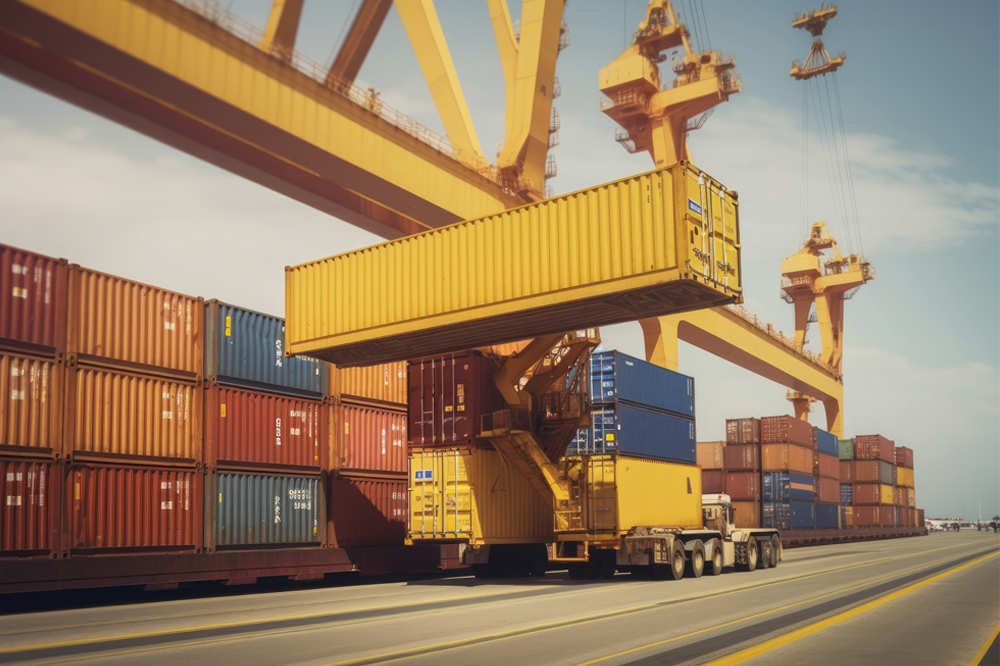Loading and Unloading of Dangerous Goods

Loading and unloading of dangerous goods
Every year, countless commodities of very high value are exchanged around the world. Each of these products, regardless of whether they are dangerous or not, meet the needs of one of the consumers of the product around the world; So it is necessary to transport and exchange them. In addition to being strategic, these types of goods increase the value of exchanges between countries and bring commercial prosperity. Some of these loads are considered dangerous loads and therefore there is a special style for loading and unloading dangerous loads that you should be aware of.
What are dangerous goods in cargo?
A dangerous good (also known as hazardous material or hazmat) is any substance or material capable of posing an unreasonable risk to health, safety, and property when transported in commerce.
If one of the points related to the transportation of this type of goods is not observed, it will cause irreparable problems and damages. In this article, we will examine the unloading and loading of dangerous goods and loads and share its basic principles with you.
- Principles of loading and unloading dangerous goods
- Principles after loading and unloading dangerous goods
- SMGG rules under 10-column tables
- Hazardous cargo loading and unloading systems

Principles of loading and unloading dangerous goods
In this section, we will review the duties of the receiver and sender of cargo and share with you the important points of loading and unloading.
First, after loading, the environment in which the load was transported must be completely cleaned; This cleaning includes removing all types of labels for the desired material and opening all air valves and draining liquids. Note that if for any reason this cleaning is not done correctly, for example, you do not remove the labels from the walls of the vehicle or do not open any hatches, these items will remain and this issue may cause problems for the next transportation.
The second principle that you must observe when loading and unloading dangerous goods is how to secure the goods. To prevent contents from spilling or tipping over during shipping, you must secure the packages in place to keep them in place.
If the desired materials are packed in bags or cartons, it is necessary to have 10 bags or 5 empty cartons inside the container.
Principles after loading and unloading dangerous goods
Cargoes should not be stored for a long time at the destination and should be sent to the next destination quickly.
Evacuate all cargo before repairs such as welding to prevent fire and ignition of loads.
All valves and drain valves must be sealed after removing the material.
Use distinguishing labels for the dangerous goods wagon or location.
Inform the relief force and the police guarding the desired location or the warehouse where the cargo is located, so that they can watch over the loads and be prepared for any problem. Take this seriously.
The safety and protection of the workforce during the loading and unloading of dangerous goods is one of the most important issues that you should be aware of.
All personnel and work forces must be trained, diligent and responsible for observing safety points. Necessary training about each shipment must be discussed with the workforce before unloading and loading dangerous goods.

SMGG rules under 10-column tables
When transporting dangerous goods, you must have these ten items with you, along with other documents, so that the loading and unloading of dangerous goods can be done in the best way:
Number and number related to the category: in this type of classification, 3 letters a, b and c are used to express the severity of the product’s risk; respectively, a for very dangerous, b for medium risk and c for the lowest level of risk are placed on the product packaging. For example 21a, where the number here indicates the row and the letter a indicates the severity of the dangerousness of the goods.
Cargo name and number and code of the United Nations of each commodity, which is called the UN code.
The type and packaging of the product must be listed on the product.
The maximum load packing capacity should be specified.
The maximum amount of mass and net weight of the package of cargo and cargo in kilograms
Signs and symptoms of dangerous goods should be included on the package of the cargo.
Danger signs must be placed on the container and wagon.
Prohibition of shared loading must be included in the shipment.
Notes and documents related to dangerous goods documents should be prepared carefully and shared with relevant people.
Hazardous cargo loading and unloading systems
Today, mechanized loading and unloading systems are very useful in the world of transportation. These efficient devices increase the speed and ease of moving products from warehouse to transport and vice versa. The use of such devices in a production and transfer line, in addition to preventing the consequences of transporting dangerous goods, also reduces the cost of manpower and product losses, and increases the ease of transfer, loading and finally unloading. Among them, it is possible to mention the loading and imagination conveyors, and in recent years, fully robotic systems are also used in various loading areas.



